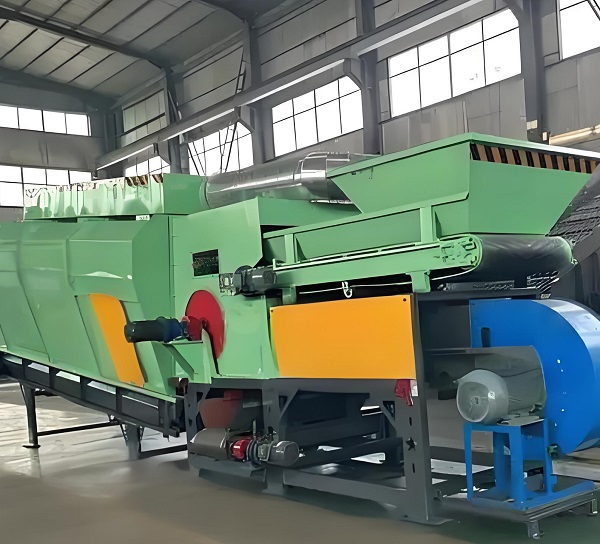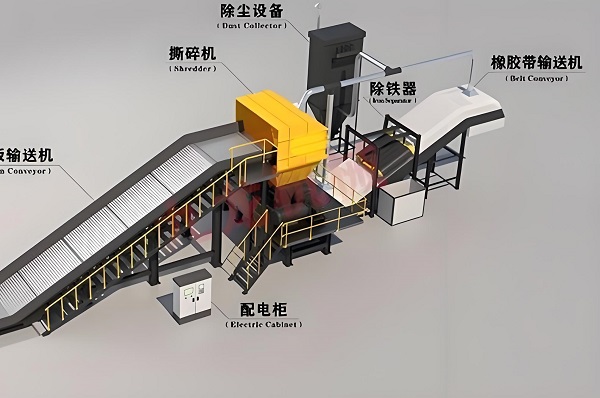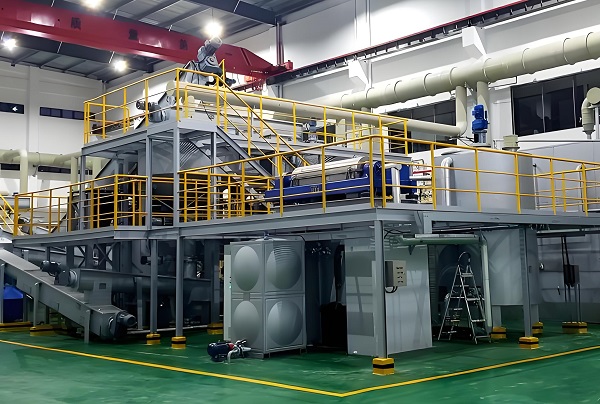The treatment of household waste is of great significance for environmental protection and resource recycling. Through methods such as classification, incineration, landfill, and composting, household waste can be effectively treated, reducing environmental pollution and achieving resource reuse. These treatment methods not only help reduce the encroachment of garbage on land and water resources, but also recycle useful substances, convert them into energy or fertilizer, and promote sustainable economic development. Therefore, the treatment of household waste is an important part of building green and sustainable cities.

Current situation of urban household waste treatment:
1. Technical level and development trend of household waste treatment
With the continuous improvement of domestic waste treatment technology, it presents the characteristics of diversification, specialization, and scale. With the continuous advancement of industry technology and the increasing demand for environmental protection, specialized enterprises are gradually emerging. At the same time, the application of new technologies and equipment has also promoted the transformation and upgrading of the domestic waste treatment industry. In the future, domestic waste treatment technology will pay more attention to technological innovation and the improvement of environmental standards, strengthen digital and intelligent construction, and promote the construction of digital power plants. In addition, collaborative cooperation and resource integration between the upstream and downstream of the industrial chain will also become an important trend in the development of the industry.

2. Domestic waste disposal capacity and methods
With the acceleration of urbanization and the continuous expansion of population size, the amount of household waste generated shows a fluctuating growth trend. Using various methods of household waste treatment, mainly including sanitary landfill, incineration power generation, biodegradation, and recycling.
a. Sanitary landfill: Sanitary landfill is a long-term treatment process with strict requirements for site selection, site treatment, staged garbage filling, and coverage. This method has a large processing capacity and can handle both urban mixed waste and waste from other waste treatment processes, as well as waste that cannot be recycled. However, it occupies a large amount of land resources and may have certain impacts on the surrounding environment, such as land and surface water pollution caused by leachate from garbage.
b. Incineration power generation: Incineration is a method of placing garbage in a high-temperature furnace to fully oxidize its combustible components. The heat generated after incineration can be used to produce steam or electricity, as well as for heating or production needs. Incineration is a better method to achieve the "three transformations" (harmless, reduction, and resource utilization) of garbage treatment, which can significantly reduce the volume of garbage, save landfill land, and kill pathogens in garbage. At the same time, the heat generated by incineration can be converted into resources such as electricity, achieving the resource utilization of garbage. In recent years, with the advancement of technology and policy promotion, the amount of harmless incineration treatment has maintained a high growth rate, and its proportion in harmless treatment methods has gradually increased, becoming one of the main treatment methods for household waste.
c. Biodegradation (composting treatment): Biodegradation mainly utilizes the organic matter components in garbage, stabilizes the components through fermentation, and obtains combustible gases as by-products. After composting, the organic matter in the garbage components enters a stable state after fermentation and can be used as biomass fertilizer for soil remediation, etc. But this method has high requirements for garbage classification and is affected by factors such as weather, time costs, and machinery costs.
d. Recycling: Recycling is an effective way to prevent further loss of resources, energy waste, and environmental pollution. Most recyclable waste mainly consists of four categories: metal, glass, paper, and plastic. Through recycling, the consumption of trees, water, electricity, and pollutant emissions can be reduced, which is beneficial for resource recycling and sustainable economic development.

3. Handling demand and scale
With the rapid development of China's economy and society and the improvement of people's material consumption level, the demand for the treatment of household waste continues to grow. The continuous growth of urban garbage collection has driven the vigorous development of the domestic waste treatment industry.
4. Processing methods and techniques
Currently, there are three main harmless treatment methods for household waste, namely incineration, landfill, and composting. Among them, garbage incineration has become the preferred solution for urban waste disposal due to its high degree of harmlessness, carbon reduction, saving a large amount of landfill land, and providing additional profits such as power generation and heating. In recent years, with the maturity of flue gas purification technology and the promotion of incineration treatment technology, the construction of domestic waste incineration power generation projects has continued to advance, and production capacity has been rapidly released.
At the same time, although landfill treatment is still used in some areas as a traditional waste disposal method, its proportion has gradually decreased. With the increasing national requirements for environmental protection and the scarcity of land resources, landfill treatment is gradually being replaced by more environmentally friendly and efficient incineration treatment. In addition, composting treatment, as a resource utilization method, has also been promoted and applied in some rural areas.
5. Facility construction and operation
In terms of facility construction, various regions in China have continuously increased investment and built a number of harmless treatment facilities for household waste. These facilities include incineration plants, landfills, composting plants, etc., providing strong guarantees for the harmless treatment of household waste. At the same time, various regions are actively promoting the upgrading and intelligent management of household waste treatment facilities to improve treatment efficiency and reduce operating costs.

6. Challenges and coping strategies
Although significant progress has been made in the urban household waste treatment industry, it still faces some challenges. For example, there is still a shortage of garbage treatment facilities and insufficient processing capacity in some areas; The work of garbage classification still needs to be further strengthened; Some processing technologies still face environmental pollution risks and other issues. To address these challenges, the following strategies can be adopted: firstly, increase investment and accelerate the construction progress of waste treatment facilities; Secondly, strengthen the publicity and education on garbage classification, and enhance the public's awareness of garbage classification; The third is to strengthen technological research and innovation, improve the level of domestic waste treatment technology and environmental standards; The fourth is to strengthen supervision and ensure the safe operation and environmental compliance of garbage disposal facilities.
7. Development Trends and Prospects
In the future, the treatment of urban household waste will continue to develop towards a more environmentally friendly, efficient, and intelligent direction. On the one hand, the government will continue to increase investment, build more harmless treatment facilities for household waste, and improve their processing capacity; On the other hand, various regions will actively promote garbage classification and resource utilization work to achieve the reduction, resource utilization, and harmless treatment of household waste. At the same time, with the continuous advancement and innovation of technology, the domestic waste treatment industry will also usher in more new technologies and models to further improve treatment efficiency and reduce operating costs.
In summary, the current situation of domestic household waste treatment presents characteristics such as continuous growth in the amount of treated waste, diversified treatment methods, continuous improvement in technological level, and strengthened policy promotion. In the future, with the continuous advancement of technology and the continuous promotion of policies, the domestic household waste treatment industry will usher in a broader development prospect.
Save Time! Get A Detailed Quotation Quickly.
